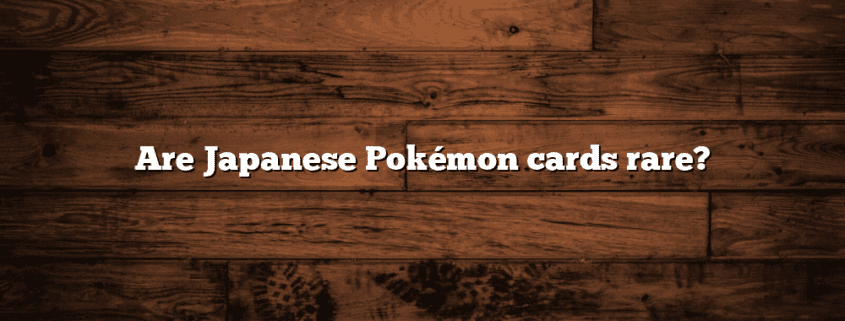Are Pokémon cards worth investing in?
Are Pokémon Cards Worth Investing In?
When it comes to investing, there are countless options available, from stocks and real estate to cryptocurrencies and collectibles. One such collectible that has gained significant popularity in recent years is Pokémon cards. These trading cards, featuring various Pokémon characters, have become a hot commodity among collectors and investors alike. But the question remains: are Pokémon cards worth investing in? In this article, we will explore the factors that make Pokémon cards a potentially lucrative investment and provide valuable insights for readers considering entering this market.
The Pokémon Card Market: A Lucrative Opportunity
The Pokémon card market has experienced a surge in value over the past few years, with certain cards fetching astronomical prices. For example, a rare 1999 Pokémon First Edition Charizard card recently sold for a staggering $369,000 at auction. This significant increase in value has caught the attention of investors, who see Pokémon cards as a potentially lucrative investment opportunity.
One of the key factors driving the value of Pokémon cards is their scarcity. Just like any other collectible, the rarer a Pokémon card is, the more valuable it becomes. Certain cards, such as the aforementioned First Edition Charizard, are highly sought after by collectors due to their limited availability. This scarcity creates a sense of exclusivity and drives up the prices in the market.
Case Study: The Pokémon Card Boom
To further illustrate the potential of Pokémon cards as an investment, let’s take a look at a real-life case study. In 2016, a Pokémon card collector named Gary Haase purchased a collection of 103 Pokémon cards for $107,000. Fast forward to 2021, and the value of that collection has skyrocketed to an estimated $10 million. This remarkable return on investment showcases the potential for substantial gains in the Pokémon card market.
Factors to Consider Before Investing
While the Pokémon card market may seem like a goldmine, it is essential to consider several factors before diving into this investment opportunity:
- Authenticity: Due to the increasing value of Pokémon cards, counterfeit cards have become prevalent in the market. It is crucial to ensure the authenticity of the cards before making any purchases. Consulting with reputable experts or grading companies can help verify the legitimacy of the cards.
- Condition: The condition of a Pokémon card significantly impacts its value. Cards in mint condition, free from any damage or wear, command higher prices. Investing in cards with excellent condition can potentially yield greater returns in the future.
- Market Trends: Like any investment, it is essential to stay informed about market trends and fluctuations. Keeping an eye on auction results, price guides, and industry news can help investors make informed decisions and identify potential opportunities.
The Future of Pokémon Cards
As with any investment, predicting the future value of Pokémon cards is challenging. However, several factors suggest that the Pokémon card market will continue to thrive:
- Nostalgia: Pokémon has a dedicated fan base that spans across generations. The nostalgia associated with Pokémon cards ensures a consistent demand for these collectibles.
- Popularity: Pokémon’s continued popularity, fueled by video games, movies, and TV shows, ensures a steady stream of new collectors entering the market.
- Global Appeal: Pokémon is a global phenomenon, with fans and collectors from all around the world. This broad appeal contributes to the overall demand for Pokémon cards.
Summary
While investing in Pokémon cards may not be suitable for everyone, it presents a compelling opportunity for those willing to do their due diligence. The Pokémon card market has shown significant growth and potential for substantial returns on investment. However, it is crucial to consider factors such as authenticity, condition, and market trends before diving into this market. With the right research and careful consideration, Pokémon cards can be a valuable addition to an investment portfolio.










